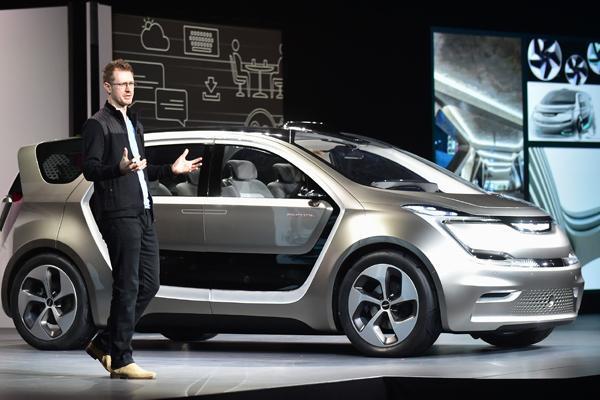CES 2017: Fiat-Chrysler unveiled a new concept car which is aimed at what it describes as the ‘emerging generation’ at the CES Event in Las Vegas. The electric-powered mini-van has been built with modular components in order to enable the vehicle to be adapted for autonomous driving.
The new design is radically different from its counterparts. Engineers at Chrysler revealed that the innovative mini-van has an adaptable, modular ‘third space’ that can be modified for passengers or cargo. It also uses an array of sensors to monitor driving conditions that can assist drivers especially during times of poor visibility.
Management at Fiat-Chrysler turned heads when it disclosed that it can be sued in ‘semi-autonomous operation’ where a driver has the option to turn control over to the vehicle under certain highway driving situations. It has also been engineered to upgrade to higher levels of autonomy as technology progresses according to a press statement issued at the global tech trade event in Nevada.
FCA's Tim Kuniskis said that the concept drew inspiration from ’significant research’ on the millennial generation.
"Millennials have clearly defined that they want a vehicle that will grow with them as they experience life changes. FCA is a leader in family transportation and it was essential that we fully explored the idea of what a vehicle could look like for this emerging generation."
The vehicle, for which production plans have not yet been formally announced, is designed as a family car that can be adapted for commercial use or car-sharing. Chrysler engineer Ashley Edgar said it was loosely based on the Chrysler Pacifica, but is ‘a new platform’. She said the design is "very focused on modularity," adding that "it grows with you, it evolves with you." For example, seats can be added as a family grows to avoid the need for a new vehicle.
It has full-color, changing LED lighting on the front, side portals and rear that allows it to take on different colors and can be tailored for personal, business, or drive settings. In terms of electronics, the car is designed with facial recognition and voice biometrics to recognize the driver to customize lighting, music and other settings. It can also work with emerging safety technologies such as vehicle-to-vehicle and vehicle to infrastructure communication.
Edgar concluded by saying that although there were no specific production plans for the car, some features were "very close" to being implemented on a production car. The Italian-American firm is working with a number of partners on the car including Adient, Magneti Marelli, Panasonic Automotive and Samsung Electronics.

